Bordeaux - Elegant, Refined, With French Gloss, But Without Arrogance
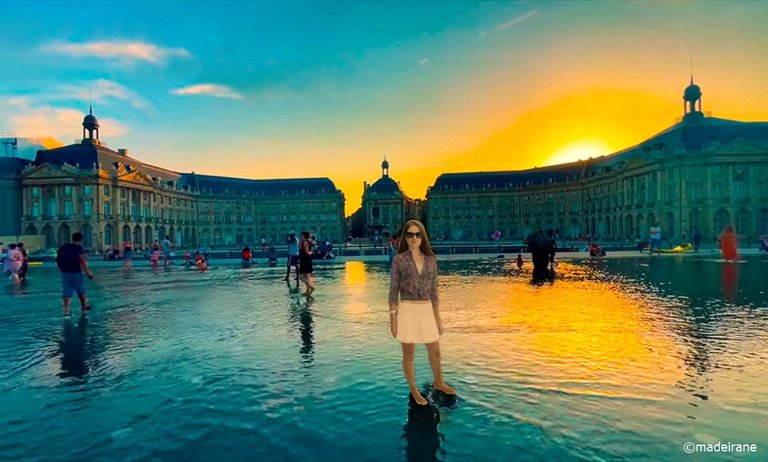
I admit, I knew a little about the city of Bordeaux. I knew that it was the capital of one of the most famous world wine brands and that the city was surrounded by thousands of hectares of Château family vineyards, passed down from generation to generation. But I had no idea that the city was so beautiful with its architecture, graceful ensembles, and just elegant in general...
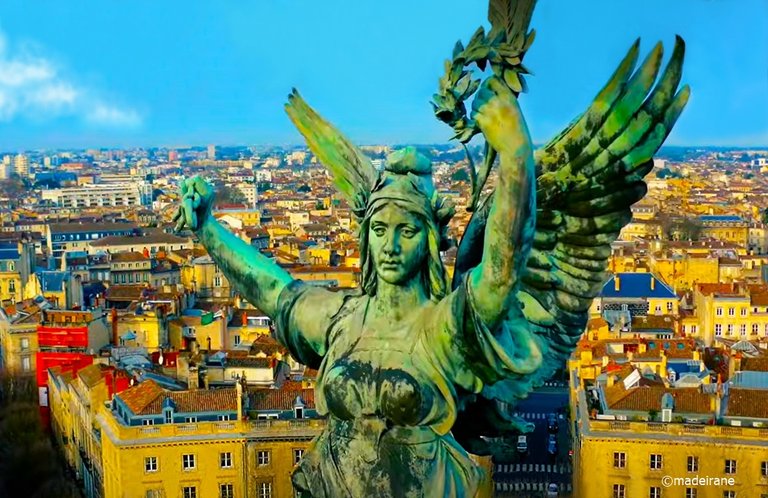
And so, our acquaintance with the capital of the Aquitonia region, a wonderful city, in my opinion, Bordeaux, began.

And the first thing that surprised us was the unusual trams. Not only are there so many of them, and they are super modern, but they are also wireless. And this is in a small city with a population of less than 300 thousand people. And the second thing is that there are few tourists, but many Arabs. Later, we realized that at first we had just ended up in Arab neighborhoods.

I have already mentioned in my reviews more than once that we prefer to explore cities on foot. Here is Bordeaux, or rather the old town. It is better to get to know it on foot, or at worst, by tram. So we got to Victoria Square.

In the middle of the square there is a marble column. Near the column there is a bronze turtle. The author of the column and the turtle is the artist Ivan Teimer. And both of these works are dedicated in some way to winemaking.


On the other side of the column is the Aquitaine Gate, erected in honor of the birth of Louis XV's grandson, the Duke of Aquitaine.
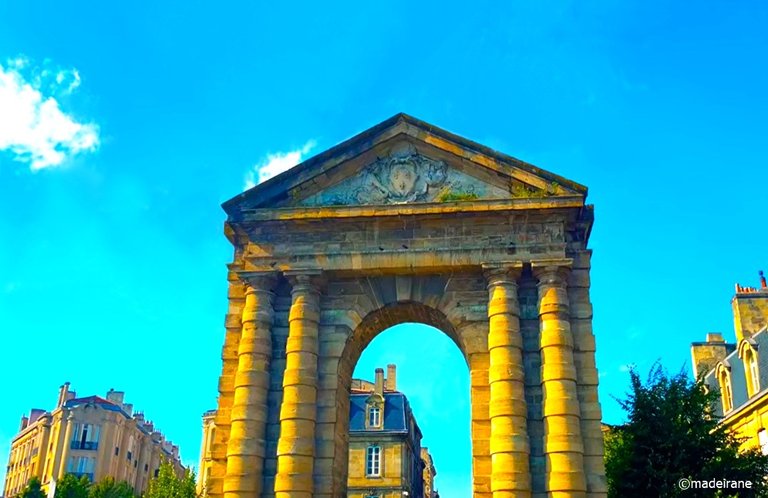
The long pedestrian shopping street Sainte Catrine starts from the square. This is the oldest street. It is home to, well, a lot of shops and stalls. Of course, there were boutiques, but at times the street resembled some Arab and Chinese stalls with consumer goods, but there was definitely something to look at...

And so, ahead we saw a tower, high up in the almost cleared sky. It turned out to be the bell tower of the flamboyant Gothic Pey-Berland, the spire of which is crowned with a golden statue of Notre-Dame-de-l'Avetain.
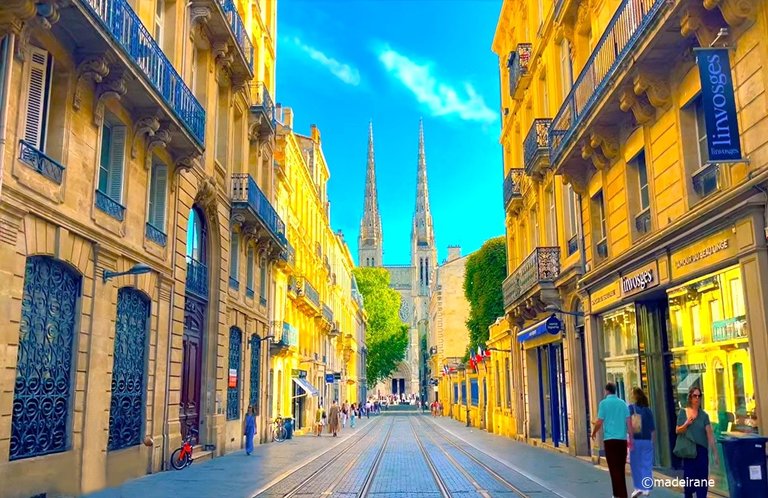

Next to the bell tower on the square with the same name, Pe-Berland, is the majestic Cathedral of St. Andrew. And the stone carvings of Gothic churches always fascinate me!
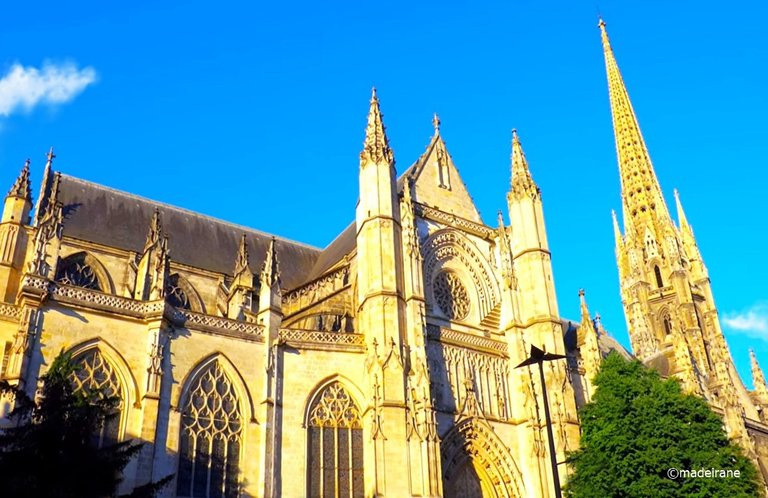
The neoclassical Palais Rohan, once built for Archbishop Ferdinand Rohan, is also located on the same square. Now, it ouses the Museum of Fine Arts and also the city hall.
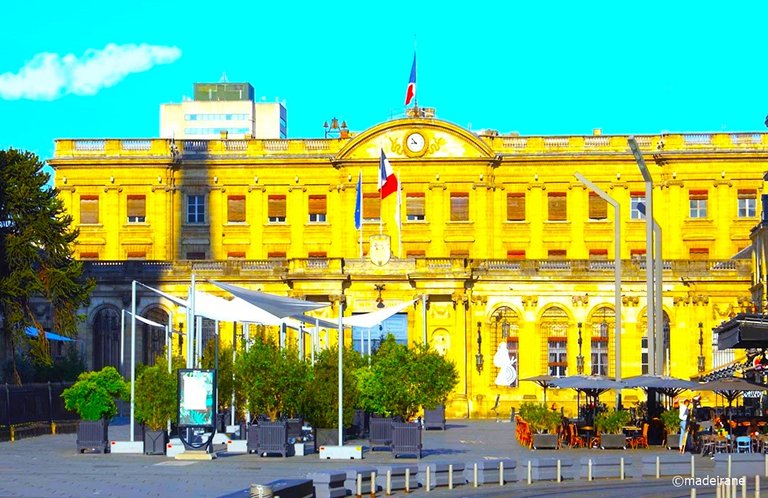
Having walked around the entire square, we went on to walk along one of the streets adjacent to the square. Making our way through the labyrinth of narrow streets, we came out onto a small ancient square at the Cayo gate. It was through the gates that travelers and traders who first arrived in the city would immediately enter. Well, the gates look very much like some kind of medieval building! However, they were built much later, in honor of the victory of King Charles VII and the conquest of the Kingdom of Naples.


The style of the gate itself surprised me. It seems to be Gothic, but then again there is also a Renaissance touch. Through the gate we went out onto the embankment (Ricnelieu) of the Garonne River and then walked along it.
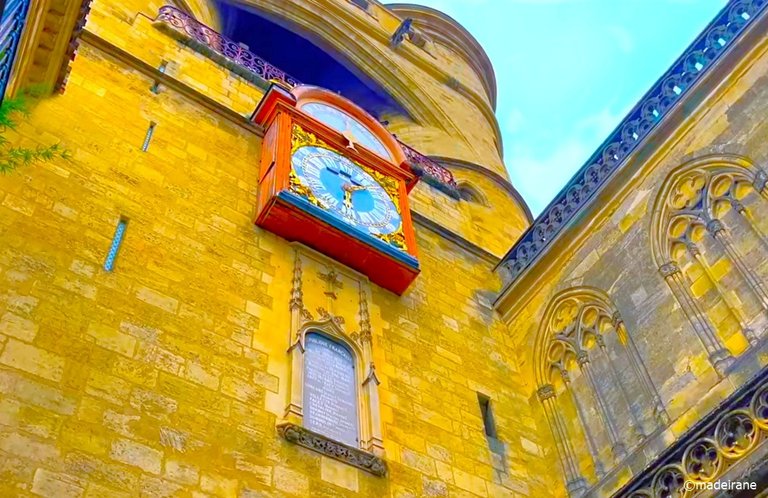
Turning away from the embankment onto a narrow side street, we came to another church - St. Peter's Cathedral. The street was so narrow that it was difficult to photograph it in its entirety. And the houses surrounding it clearly indicate that a medieval quarter had once flourished here.

Once again wandering through narrow streets and alleys, we finally came out to the river again, this time to the Place de la Bourse, framed by elegant buildings standing in a semicircle - the Palace of the Bourse and the Hotel des Fermes, which currently houses the Customs Palace.
In the center of the square is the fountain of the Three Graces, the three daughters of Zeus, goddesses of fun and joy of life. The townspeople believe that the faces of the sculptures are very similar to the faces of the three great empresses of those years. But I can't say exactly which ones.

And what I really wanted to see when I was still at home was the area covered with a thin layer of water, the "Water Mirror". This is a kind of reflecting pool with an area of 3,500 sq. m. In the warm season, tiny droplets of water are sprayed from it and the area is shrouded in clouds of fog.

But still, there we felt extraordinary feelings near it. When you see the sky, and the buildings, and everything, everything is reflected in the mirror. I will say that from the embankment, the stock exchange square is perceived as a symbol of elegance and symmetry.

In the distance in the photo you can see a bridge, similar in its arched spans to some ancient Roman ones. This is the Pierre bridge. In the evening, the embankment is immersed in a special romantic atmosphere. The bridge is all aglow; it is illuminated by a special system of spotlights. And you can admire it for a long time from the embankment. It was built in the 19th century by order of Napoleon. It is curious that the 17 arches of the bridge symbolize the 17 letters of the name Napoleon Bonaparte.

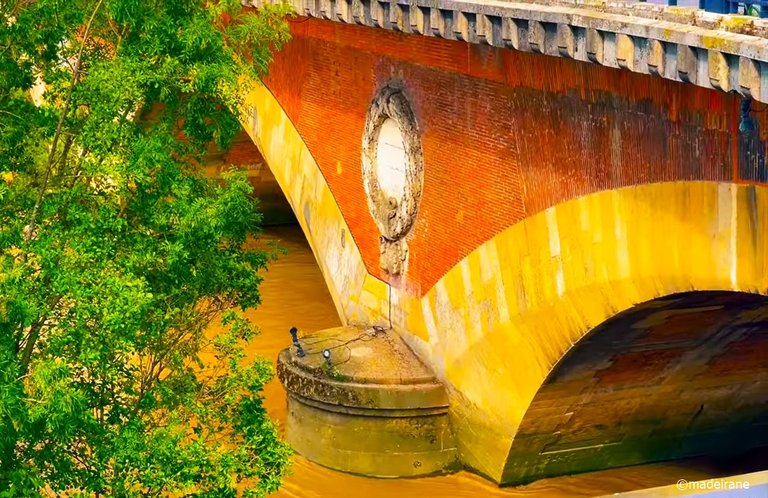
I will say that the embankment in Bordeaux is simply wonderful. These are spacious walking strips with many flower beds, bushes, trees, stretching along the Garonne.

If you go further along the embankment, you can reach the Place du Quinconces, which is what we did. After passing through the plane tree alley, we came to a high column, crowned with a sculpture, which was surrounded by a huge fountain. This ensemble, it turns out, is dedicated to the Girondins.

The fountain is like a real riot of horses and people. And already at home, I crawled on the Internet to find out who these Girondins were. I found out that they were representatives of one of the parties of the French Revolution, of which 22 people were executed. But what horses have to do with it, I still don't understand...
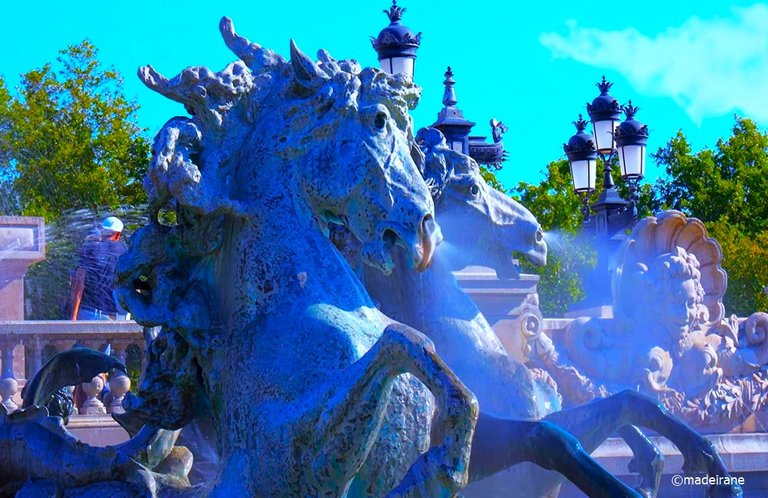
Not far from the Fountain dedicated to the Girondins, and from the Magic Mirror square, there is another square that certainly deserves attention - Place de la Comedia. On one side of the square, there is the building of the Grand Theater, built in the neoclassical style. The facade of the building is looking greet with its high columns. On the top are the figures of three goddesses - Minerva, Juno, Venus and some 9 more muses. We were told that this Grand Theater is famous throughout France for its opera productions.


On the other side of the square there is a very cool Grand Hotel. By the way, here on the square there is a tourist office, where you can get a city map or book a tour. There are many restaurants and cafés on the square, and a street with the cute name of Little Red Riding Hood begins from it. However, I couldn’t figure out why it’s called that.
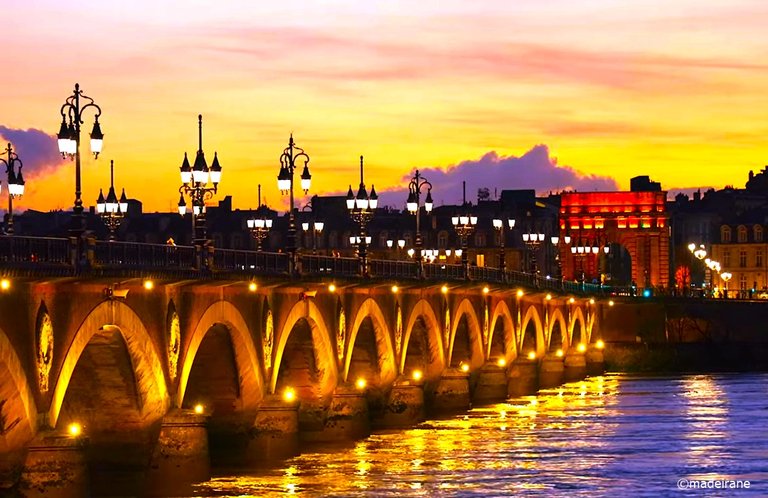
This is how I saw Bordeaux as a charming city, with a special French gloss and color, but without arrogance. It seemed to me that Bordeaux combines the best of French classical architecture, this elegant city with a rich cultural life and, of course, with divine wine.
💝💝💝💝💝💝💝💝💝💝
With love, @madeirane
Photos are taken by me.
© 2025
Translated from Lithuanian with DeepL.com (free version)
Prisipažinsiu, apie Bordo miestą žinojau nedaug. Žinojau, kad tai vieno garsiausių pasaulyje vyno ženklų sostinė ir kad miestą supa tūkstančiai hektarų iš kartos į kartą perduodamų Château šeimos vynuogynų. Tačiau neįsivaizdavau, kad miestas toks gražus savo architektūra, grakščiais ansambliais ir apskritai elegantiškas.
Taip prasidėjo mūsų pažintis su Akvitanijos regiono sostine, mano nuomone, nuostabiu miestu, Bordo.
Ir pirmas dalykas, kuris mus nustebino, buvo neįprasti tramvajai. Jų ne tik labai daug ir jie itin modernūs, bet ir bevieliai. Ir tai mažame mieste, kuriame gyvena mažiau nei 300 tūkst. gyventojų. O antras dalykas - čia mažai turistų, bet daug arabų. Vėliau supratome, kad iš pradžių tiesiog atsidūrėme arabų rajonuose.
Jau ne kartą savo apžvalgose minėjau, kad miestus mieliau tyrinėjame pėsčiomis. Štai Bordo, tiksliau, senamiestis. Jį geriau pažinti pėsčiomis arba, blogiausiu atveju, tramvajumi. Taigi atvykome į Viktorijos aikštę.
Aikštės viduryje stovi marmurinė kolona. Šalia kolonos stovi bronzinis vėžlys. Kolonos ir vėžlio autorius yra dailininkas Ivanas Teimeris. Ir abu šie kūriniai tam tikru būdu skirti vyndarystei.
Kitoje kolonos pusėje yra Akvitanijos vartai, pastatyti Liudviko XV anūko, Akvitanijos kunigaikščio, gimimo garbei.
Nuo aikštės prasideda ilga pėsčiųjų prekybos gatvė Sainte Catrine. Tai seniausia gatvė. Joje yra daugybė parduotuvių ir prekystalių. Žinoma, buvo ir butikų, tačiau kartais gatvė priminė kažkokius arabų ir kinų prekystalius su plataus vartojimo prekėmis, tačiau tikrai buvo į ką pažiūrėti.
Ir štai priekyje pamatėme bokštą, aukštai iškilusį beveik giedrame danguje. Paaiškėjo, kad tai - puošniosios gotikos Pey-Berland varpinė, kurios bokštą vainikuoja auksinė Notre-Dame-de-l'Avetain (Akvitanijos Dievo Motinos) statula.
Šalia varpinės to paties pavadinimo Pe-Berland aikštėje stovi didinga Šventojo Andriejaus katedra. O gotikinių bažnyčių akmens raižiniai mane visada žavi!
Toje pačioje aikštėje stovi ir neoklasikiniai Rohano rūmai, kadaise pastatyti arkivyskupui Ferdinandui Rohanui. Dabar čia įsikūręs Dailės muziejus ir miesto rotušė.
Apėję visą aikštę, toliau ėjome pasivaikščioti viena iš greta aikštės esančių gatvių. Eidami siaurų gatvelių labirintu, išėjome į nedidelę senovinę aikštę prie Kajo vartų.
Būtent pro šiuos vartus iš karto įeidavo pirmą kartą į miestą atvykę keliautojai ir prekybininkai. Na, vartai labai primena kažkokį viduramžių pastatą! Tačiau jie buvo pastatyti daug vėliau, karaliaus Karolio VII pergalės ir Neapolio karalystės užkariavimo garbei.
Nustebino pats vartų stilius. Atrodo, kad jie gotikiniai, bet yra ir renesanso bruožų. Pro vartus išėjome į Garonos upės krantinę ir paskui ėjome palei ją.
Pasukę nuo krantinės į siaurą šoninę gatvelę, priėjome dar vieną bažnyčią. Gatvelė buvo tokia siaura, kad buvo sunku ją visą nufotografuoti. O ją supantys namai aiškiai rodo, kad čia kadaise klestėjo viduramžių kvartalas.
Vėl klaidžiodami siauromis gatvelėmis ir alėjomis, galiausiai vėl išėjome prie upės, šį kartą į Biržos aikštę, įrėmintą puslankiu stovinčių elegantiškų pastatų - Biržos rūmų ir viešbučio Hotel des Fermes, kuriame šiuo metu įsikūrę Muitinės rūmai.
Aikštės centre - Trijų Gracų, trijų Dzeuso dukterų, linksmybių ir gyvenimo džiaugsmo deivių, fontanas. Miestiečiai tiki, kad skulptūrų veidai labai panašūs į trijų didžiųjų tų metų imperatorienių veidus. Tačiau negaliu tiksliai pasakyti, kurių.
O tai, ką labai norėjau pamatyti dar būdama namie, buvo plonu vandens sluoksniu padengta erdvė - „Vandens veidrodis“. Tai savotiškas atspindintis baseinas, kurio plotas 3500 kv. m. Šiltuoju metų laiku iš jo purškiami maži vandens lašeliai ir vietovę apgaubia rūko debesys.
Bet vis dėlto šalia jo jautėme nepaprastus jausmus. Kai matai dangų, pastatus ir viską, viskas atsispindi veidrodyje. Pasakysiu, kad nuo krantinės biržos aikštė suvokiama kaip elegancijos ir simetrijos simbolis.
Tolumoje nuotraukoje matote tiltą, kuris savo arkiniais tarpatramiais panašus į kai kuriuos senovės romėnų tiltus. Tai Pjero tiltas. Vakare krantinė pasineria į ypatingą romantišką atmosferą. Tiltas visas švyti; jį apšviečia speciali prožektorių sistema. Nuo krantinės juo galima ilgai grožėtis. Tiltas pastatytas XIX a. Napoleono įsakymu. Įdomu, kad 17 tilto arkų simbolizuoja 17 Napoleono Bonaparto vardo raidžių.
Pasakysiu, kad Bordo krantinė yra tiesiog nuostabi. Tai erdvios pasivaikščiojimo juostos su daugybe gėlynų, krūmų, medžių, besidriekiančios palei Garoną.
Jei krantine eisite toliau, pasieksite Kvinkonų aikštę, ką mes ir padarėme. Praėję platanų alėją, priėjome prie aukštos kolonos, vainikuotos skulptūra, kurią supo didžiulis fontanas. Šis ansamblis, pasirodo, skirtas girondistams.
Fontanas primena tikrą žirgų ir žmonių maištą. Ir jau namuose įlindau į internetą, kad sužinočiau, kas tie girondinai. Sužinojau, kad jie buvo vienos iš Prancūzijos revoliucijos partijų, iš kurių 22 žmonėms buvo įvykdyta mirties bausmė, atstovai. Bet ką su tuo bendro turi arkliai, taip ir nesupratau...
Netoli nuo žirgininkams skirto fontano ir nuo Magiškojo veidrodžio aikštės yra dar viena aikštė, kuri tikrai verta dėmesio - Komedijos aikštė. Vienoje aikštės pusėje stovi neoklasikinio stiliaus Didžiojo teatro pastatas. Į pastato fasadą žvelgia sveikutėlis aukštų kolonų fasadas. Ant jų - trijų deivių - Minervos, Junonos, Veneros ir dar maždaug 9 mūzų figūros. Mums pasakojo, kad šis Didysis teatras visoje Prancūzijoje garsėja operos spektakliais.
Kitoje aikštės pusėje yra labai šaunus Grand Hotel. Beje, čia, aikštėje, yra turizmo biuras, kuriame galima gauti miesto žemėlapį arba užsisakyti ekskursiją.
Aikštėje yra daug restoranų ir kavinių, nuo jos prasideda gatvelė mielu Raudonkepuraitės pavadinimu. Tačiau man nepavyko išsiaiškinti, kodėl ji taip vadinasi.
Taip Bordo išvydau kaip žavų miestą, pasižymintį ypatingu prancūzišku blizgesiu ir spalvingumu, bet be arogancijos. Man atrodė, kad Bordo sujungia geriausius prancūzų klasikinės architektūros bruožus, šį elegantišką miestą su turtingu kultūriniu gyvenimu ir, žinoma, su dievišku vynu.
You can check out this post and your own profile on the map. Be part of the Worldmappin Community and join our Discord Channel to get in touch with other travelers, ask questions or just be updated on our latest features.
🎉🎉🥳 Congratulations 🥳🎊🎊
Your post has just been curated and upvoted by Ecency
keep up the good work
Join us on the Ecency Discord
I really loved the photography. The colors and angles look so neat and amaze me! Its really such a great things.
Wow! The city is full of charm. Those modern touches, like the wireless trams gliding past centuries old buildings, add such a unique contrast. That blend of art, history, and urban beauty really speaks to the soul of the city.
Congratulations @madeirane! You received a personal badge!
You can view your badges on your board and compare yourself to others in the Ranking
Check out our last posts: